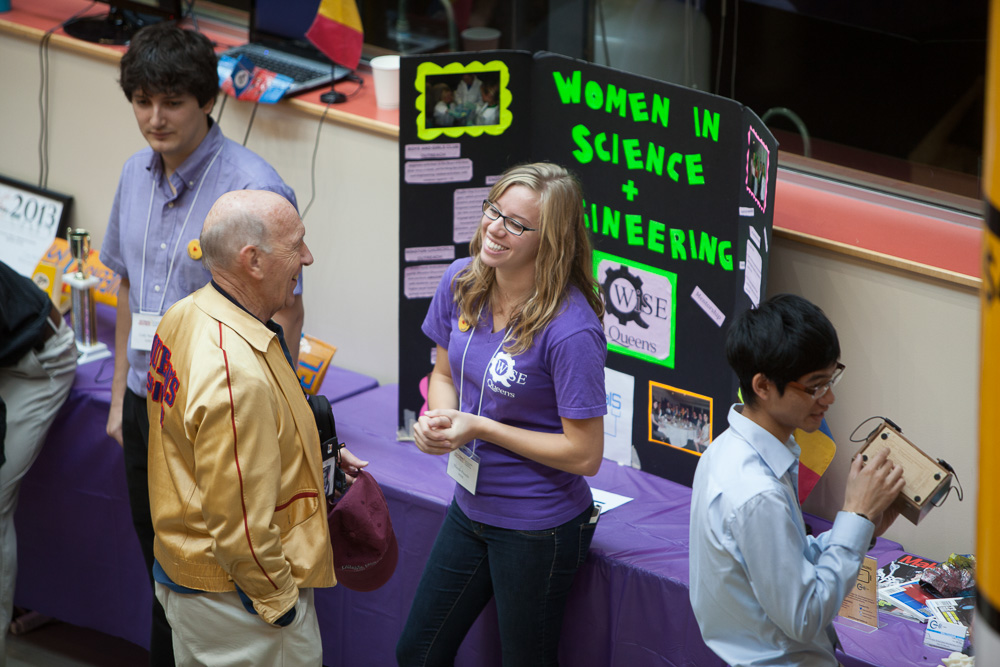Queen's leads Canada in female enrolment in undergraduate engineering
October 23, 2013
Share
 Student Nicole Proulx speaks with an alumnus at an engineering Homecoming event.
Student Nicole Proulx speaks with an alumnus at an engineering Homecoming event.By Meredith Dault, Senior Communications Officer
Growing up, Nicole Proulx (Sc’14) knew she loved math and science. She also loved the challenge of applying theoretical principles to real life problems. So when it was time to pick a program at university, she opted for engineering. Though it wasn’t top of her mind, Ms. Proulx was conscious of the fact that she was entering a field where women are still the minority. But as a female student choosing to study engineering at Queen’s, she also knew that she would be far from alone.
That’s because Queen’s has the highest percentage of women engineering students of any major engineering school in the country. Twenty-eight per cent of this year’s incoming class is female – a percentage that is significantly higher than the national average of between 17 and 19 per cent.
Lynann Clapham, Associate Dean for the Faculty of Engineering and Applied Science, stresses that while Queen’s doesn’t do anything specific to attract female students, she believes many are drawn to the program’s non-competitive and welcoming approach. “In recent years we’ve worked to promote the pillars of our program – create, collaborate, communicate – and they seem to resonate with women,” Dr. Clapham explains.
She believes the program’s unique common first year program, in which students have the opportunity to learn about engineering broadly before choosing an area of specialization, is a draw, too. "People generally see engineering students and programs as being very competitive. But here, the only competitive aspect is getting your Queen’s Engineering offer out of high school. Once you are in first year, all you have to do is pass your courses, and then you can then go into any program you like. This is huge for our students, because it really takes the pressure off in their first year.”
Ms. Proulx, who now studies engineering physics, says the common first year program was definitely a draw when she was looking at universities. “I didn’t really know what engineering was before I got into it,” she admits, “and so I wasn’t sure what I wanted to do.”
She now serves as the president of Queen’s Women in Science and Engineering (WISE), a group that works to promote opportunities for women in engineering – from organizing networking nights for students and alumni, to finding mentorship opportunities and running outreach programs for girls in the community.
Ms. Proulx says she particularly loves encouraging girls to consider studying engineering. “I think it’s important for younger kids to find out what it is,” she says. “It’s awesome when you do something cool with them and they get excited. You can really see the light sparkle in their eyes.”
Watch a video by the student media squad about women in engineering at Queen's.